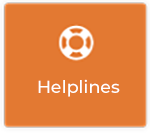UP2US Lesson 1 – Bullying: The Effects
- +Curriculum Links
- Junior Cycle SPHE Short Course Strand 3:
Anti-bullying: Critique the ways in which we include and exclude others and the impact of this.
Additional learning outcomes:
Strand 1: How I see myself and others. Discuss a range of influences on their self-esteem and self-image.
Strand 4: Mental Health and well-being. Explain the links between thoughts, feelings and behaviour. - +Resources and Methodologies
- Resources: Video clip from Let’s Fight It Together (available online at www.webwise.ie/up2us), Poster board, Colouring utensils, Copies of Worksheet 1.1.
Methodologies: Video analysis, working in pairs, whole class discussion, graphing, poster making.
- +Learning Outcomes
- Learning outcomes: Students will have sympathised with people involved in bullying. Students will be able to explain why and how people bully. Students will be sensitised to the effects of bullying.
- +Key Skills
- Communicating, Working with others, Managing information and thinking, Numeracy
- +Teachers’ Note
- Activity 1.1: The effects of bullying could be highlighted by starting a large ‘Effects of Bullying’ poster. The feedback to the activity on Joe’s well-being should provide suggestions for initial content for this poster. The poster could be added to and amended throughout this programme of lessons. Students could be given freedom to contribute to the poster in their own time and space. The poster will serve as a reminder of the effects of bullying. The hope is that the students will come up with ideas and artefacts that will eventually stamp out the effects of bullying by covering this poster.
Activity 1.2: The question of why people are bullied is particularly important as it begins to explore the issue of identity-based bullying. The Action Plan on Bullying and the Anti-Bullying Procedures for Primary and Post-Primary Schools both state that definitions of bullying should include reference to identity-based bullying. The Action Plan on Bullying says that schools should be welcoming of diversity and that they should work to prevent and effectively tackle homophobic and transphobic bullying in particular.
- +Activity 1 – Considering the effects of cyber bullying using video analysis
- STEP 1: Have all students watch the Let’s Fight It Together film.
STEP 2: As they watch the film the students should chart Joe’s emotional wellbeing
(see figure 1.1), taking note of any notable incidents that affected his emotions and mood. This activity may require a second viewing of the film. The chart should exclude the opening interview and instead start when the song begins.STEP 3: When their charts have been finished the students should consider the effects of bullying by giving oral feedback on the activity and by answering the following questions:1. How did this film make you feel?2. How did Joe’s well-being change in the course of the film?
Suggested answer: Joe went from being a happy person who enjoyed break times with his friends and who was confident in speaking out in class to someone who was very sad, withdrawn and lonely. As the bullying got worse, particularly after the website was created about him, Joe appeared to despair completely and almost feel as though he was in a hopeless situation. Towards the end of the film, his well-being finally began to improve again when his mother learned about the bullying and she sought help in the school. At the end Joe is seen smiling and laughing with a friend again.3. What affected Joe’s emotions and mood?
Suggested answer: The following is a list of events and experiences that affected Joe’s emotions and mood: being able to laugh and share music with friends; doing well in class;
being repeatedly excluded by former friends; receiving mean texts and threatening
phone calls; being the subject of a bullying website; being jeered by everyone on the bus; meeting the Principal to seek help; being included by a friend.4. Was anybody else affected by what happened to Joe?
Suggested answer: Mother became worried; Teacher became concerned; Another student was targeted by inclusion in the bullying website; Bystanders became concerned but don’t know how to intervene; Mob mentality took over the kids on the bus; Kim became stressed about the consequences of her actions when the police arrived at the school. - +Activity 1.2 – Exploring why people bully
- STEP 1: Students should then discuss in pairs how and why people are bullied.1. What feelings caused Kim to bully Joe?
Suggested answer: Kim felt jealous of Joe because he always seemed to do well in school. She also might have felt insecure about her own ability and so decided to make fun of Joe.2. What else might cause people to bully?
Suggested answer: Jealousy // Insecurity // Anger // Resentment // Frustration // Inability to express self in a more appropriate way // Need to feel empowered and compensate for own insecurities // Experience of having been bullied.3. Why are people bullied?
Suggested answer: Race // Gender (including transgender) // Sexuality // Religious identity // Size // Disability // Intelligence // Popularity // Personal vulnerabilities // Maturity levels // Disagreement // Because the bully has previously been bullied.STEP 2: Students should then provide feedback on their discussion to the larger group. Where appropriate, suggestions should be added to the ‘Effects of Bullying’ poster.
- +Assessment
- Students should start a working portfolio to gather information for their assessment task. Information on the effects of bullying should be particularly useful for completing Assessment Task 1. After this lesson, students should put their graph of the hurt Joe experienced into their working portfolio.






